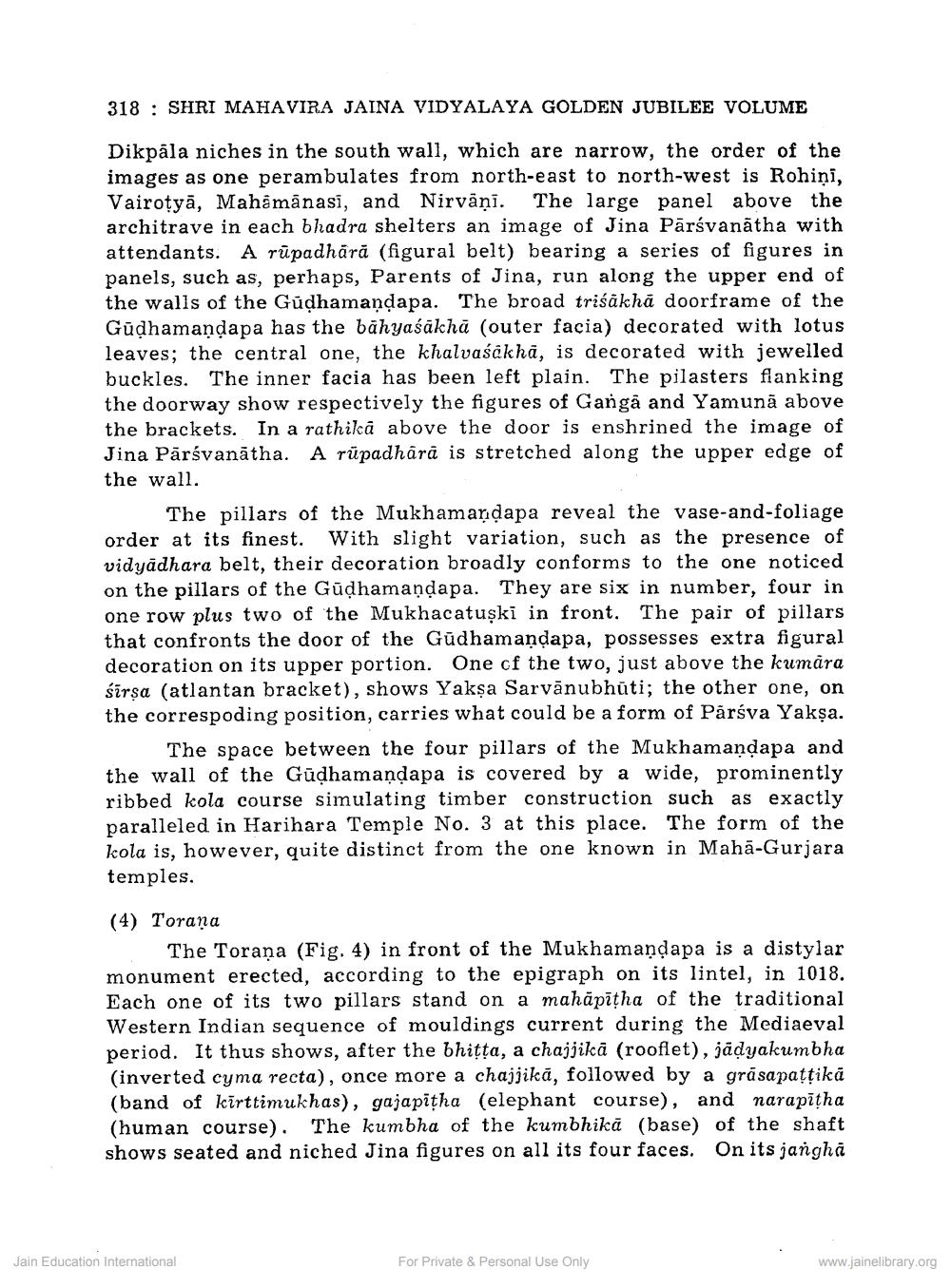________________
318 : SHRI MAHAVIRA JAINA VIDYALAYA GOLDEN JUBILEE VOLUME
Dikpala niches in the south wall, which are narrow, the order of the images as one perambulates from north-east to north-west is Rohini, Vairotyā, Mahāmānasi, and Nirvāņi. The large panel above the architrave in each bhadra shelters an image of Jina Pārsvanātha with attendants. A rūpadhāră (figural belt) bearing a series of figures in panels, such as, perhaps, Parents of Jina, run along the upper end of the walls of the Gūdhamandapa. The broad trisakhă doorframe of the Gūdhamandapa has the bāhyaśākhā (outer facia) decorated with lotus leaves; the central one, the khalvasekhā, is decorated with jewelled buckles. The inner facia has been left plain. The pilasters flanking the doorway show respectively the figures of Ganga and Yamunā above the brackets. In a rathikā above the door is enshrined the image of Jina Pārsvanātha. A rüpadhāra is stretched along the upper edge of the wall.
The pillars of the Mukhamandapa reveal the vase-and-foliage order at its finest. With slight variation, such as the presence of vidyādhara belt, their decoration broadly conforms to the one noticed on the pillars of the Gūdhamandapa. They are six in number, four in one row plus two of the Mukhacatuṣki in front. The pair of pillars that confronts the door of the Gūdhamandapa, possesses extra figural decoration on its upper portion. One cf the two, just above the kumara śīrsa (atlantan bracket), shows Yaksa Sarvānubhūti; the other one, on the correspoding position, carries what could be a form of Päráva Yakşa.
The space between the four pillars of the Mukhamandapa and the wall of the Gūdhamandapa is covered by a wide, prominently ribbed kola course simulating timber construction such as exactly paralleled in Harihara Temple No. 3 at this place. The form of the kola is, however, quite distinct from the one known in Mahā-Gurjara temples.
(4) Torana
The Toraņa (Fig. 4) in front of the Mukhamandapa is a distylar monument erected, according to the epigraph on its lintel, in 1018. Each one of its two pillars stand on a mahāpītha of the traditional Western Indian sequence of mouldings current during the Mediaeval period. It thus shows, after the bhița, a chajjikā (rooflet), jadyakumbha (inverted cyma recta), once more a chajjikā, followed by a grāsapattikā (band of kīrttimukhas), gajapitha (elephant course), and narapitha (human course). The kumbha of the kumbhikä (base) of the shaft shows seated and niched Jina figures on all its four faces. On its jangha
Jain Education International
For Private & Personal Use Only
www.jainelibrary.org




